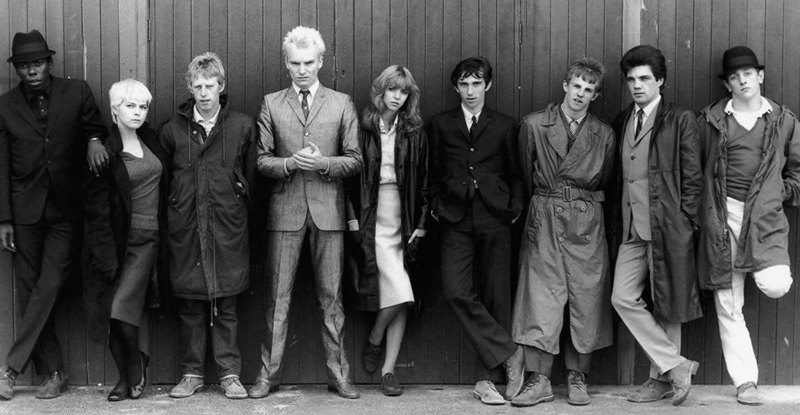Ernst Lubitsch’s “To Be Or Not To Be” (1942) must be one of the slipperiest films ever made. In the first few scenes, we see Hitler window-shopping in Warsaw with a crowd of gawkers in his wake. We soon learn that “the man with the little mustache” is really just an actor in a doomed theater production lampooning the Nazis, but soon the real Hitler is indeed on his way to town as German tanks rumble across the Polish border. Later, “the famous Polish actor Joseph Tura” (Jack Benny), a star in that same doomed production, impersonates a Gestapo colonel interviewing a Nazi agent, and then immediately turns around to impersonate the same Nazi agent as he is interviewed by the “real” Gestapo colonel.
Is it a comedy or a drama? Sure it is. The famous Lubitsch touch confidently guides a film that constantly morphs, starting as breezy farce, turning poker-faced for a long stretch, then veering right back into comedy when Jack Benny gets a big laugh by vowing to assassinate a man he has only just heard of. That joke always kills. The movie gets weirder still. At one point, a dashing young pilot named Stanislav (a 23 year old Robert Stack in one of his earliest roles) appears to take over the movie, as well as the affections of Mrs. Maria Tura (the final role for superstar Carole Lombard who died in a plane crash shortly before the film’s release), but then all but disappears completely once Benny reclaims the spotlight, after which the Turas and their now out-of-work theater troupe will defeat the Nazis with the unstoppable power of impromptu make-believe. Argo fuck yourself, Adolf.
It’s a plot almost half as insane as war, and 1942 audiences weren’t quite prepared for it. Perhaps that’s unfair. The film was modestly successful at the box office, but drew rebukes from many critics for its alleged tastelessness. The director was supposedly guilty of diminishing the Nazi menace by showing them being bamboozled by a hammy actor, a joke that Lubitsch (and co-scripter Edwin Justus Mayer, working from an idea by Melchior Lengyel) was certainly in on. When Benny, as Joseph Tura, pretends to be the Nazi agent (the “real” one being played deliciously by Stanley Ridges), he asks Gestapo Colonel Ehrhardt (a scene-stealing Sig Ruman) if he knows of the great Joseph Tura, he replies: “Oh yes, I saw Tura in Hamlet once. What he did to Shakespeare we are doing now to Poland.”
That joke was also supposedly in bad taste, and it’s unfair today to judge what wartime audiences or critics felt was appropriate humor, but that bad taste has worn off in the ensuing decades, leaving modern audiences the opportunity to savor the audacity and inventiveness of a movie that shifts so often and so seamelessly. Jack Benny plays the role of himself like he was born to it, that patented combination of bemusement and self-deprecation providing the steady center for even the whackiest sequences.
Lubitsch apparently knew a little bit about how actors work too, and extracts a great deal of comedy and some genuine sympathy from their shared neuroses. The actors are genuinely patriotic and courageous, but also incurably vain, a bundle of insecurities looking for constant validation. Maria can’t help but be flattered by the attentions of handsome young Stanislav, even if it’s clear that he’s fallen in love with her publicist’s entirely fictionalized portrait of her. And Joseph can’t stop obsessing either about his professional reputation (and lack thereof) or his wife’s potential infidelity even when death looms imminently. Just as keenly observed are the bit players in the troupe who are genuinely excited to get their shot at the role of a lifetime when they pull off the final, daring caper right in the center of the Nazi war machine in Warsaw.
“To Be Or Not To Be” may not be precisely what people have in mind when they think of films about the German Occupation, but singing “Heil pbbt!” right in Der Fuehrer’s face was certainly an act of resistance, and Lubitsch, Benny, Lombard, and company sure knew how to carry the tune.
Video:
The film is presented in its original 1.37:1 aspect ratio. I haven’t seen the 2005 SD release by Warner Home Video, but when our own John Puccio reviewed it, he mentioned some signs of damage from the source print. This high-def Criterion transfer is pretty close to pristine with sharp image detail in most scenes (a few shots look just a tad soft, but that might be from the lighting scheme) and rich contrast. For a 70 year old film, this is a fabulous picture and I have little doubt it’s as good a version as most viewers will ever see.
Audio:
The linear PCM Mono track is crisp and distortion free. Obviously, it’s not all that dynamic but it doesn’t need to be. Optional English subtitles support the English audio.
Extras:
Criterion has packed in quite a few extras.
The commentary track by film historian David Kalat which puts the film in an industrial as well as historical context, and spends a good deal of time discussing its troubled reception. There’s very little of the tedious play-by-play (“And now this is happening…”) that spoils too many commentaries; this is the well-researched work of a scholar that enriches our understanding without ever feeling dry or over-determined.
Fans of Lubitsch (that’s everyone, right?) will get a kick out of seeing him flex his comic acting muscles in the silent “Pinkus’s Shoe Palace” (1916, 45 min.) Lubitsch directs and also stars as Sally Pnkus, a character he developed over several films. Pinkus is an all-purpose miscreant, starting off as an unlikely schoolboy (Lubitsch was 24 and looked older) who gets kicked out of school, falters at several jobs, and eventually finds love and fame. I have no idea if ol’ Sally was meant to be a sympathetic character at the time; his sole purpose in life seems to be to inflict misery on others and coast through life while doing as little as possible. Since he gets rewarded for it all, I guess we’re supposed to like him, but, hey, maybe Lubitsch was just letting us know that life isn’t fair. The Sally character might also produce a few cringes today with its Jewish stereotyping, but Lubitsch was in charge of the character and plays the role to its fullest. At the very least, it’s interesting to see the writer-director on stage, even if the film is a long way from a masterpiece. The movie gets a new score by go-to silent film composer Donald Sosin.
“Lubitsch Le Patron” (2010, 53 min.) is a French docuemntary written by N.T. Binh and directed by Jean-Jacques Bernard. I didn’t last too long through this feature. A series of very, very enthusiastic french scholars and cineastes, filmed with a jittery, roving camera, gush about the genius of Lubitsch. Maybe I was in a cranky mood, but it felt over the top to me. I only watched 15 minutes though, so I can’t be a fair judge.
I wish I had the time to do more than just sample the last two extras on the disc. Criterion has included audio recordings from two episodes of the long-running radio variety program, “Screen Guild Theater.” “Variety” (Oct 20, 1940, 30 min.) features Jack benny, Claudette Colbert, and Lubitsch playing fictionalized versions of themselves. “To Be Or Not To Be” (Jan 18, 1943, 26 min.) is a very condensed version of the film’s story, starring William Powell and Diana Lewis.
The 24-page insert booklet features an essay by critic Geoffrey O’Brien as well as an editorial by Lubitsch from the March 29, 1942 “New York Times” in which he defends his film from criticisms that it was in poor taste.
Film Value:
“To Be Or Not To Be” was not an immediate triumph for the very popular Lubitsch, but it is now considered one of his finer works, and it’s easy to see why. Criterion has provided a strong transfer and a deep collection of extras on what has to be considered the definitive release of this late-career work by a Hollywood master. Strongly recommended.


